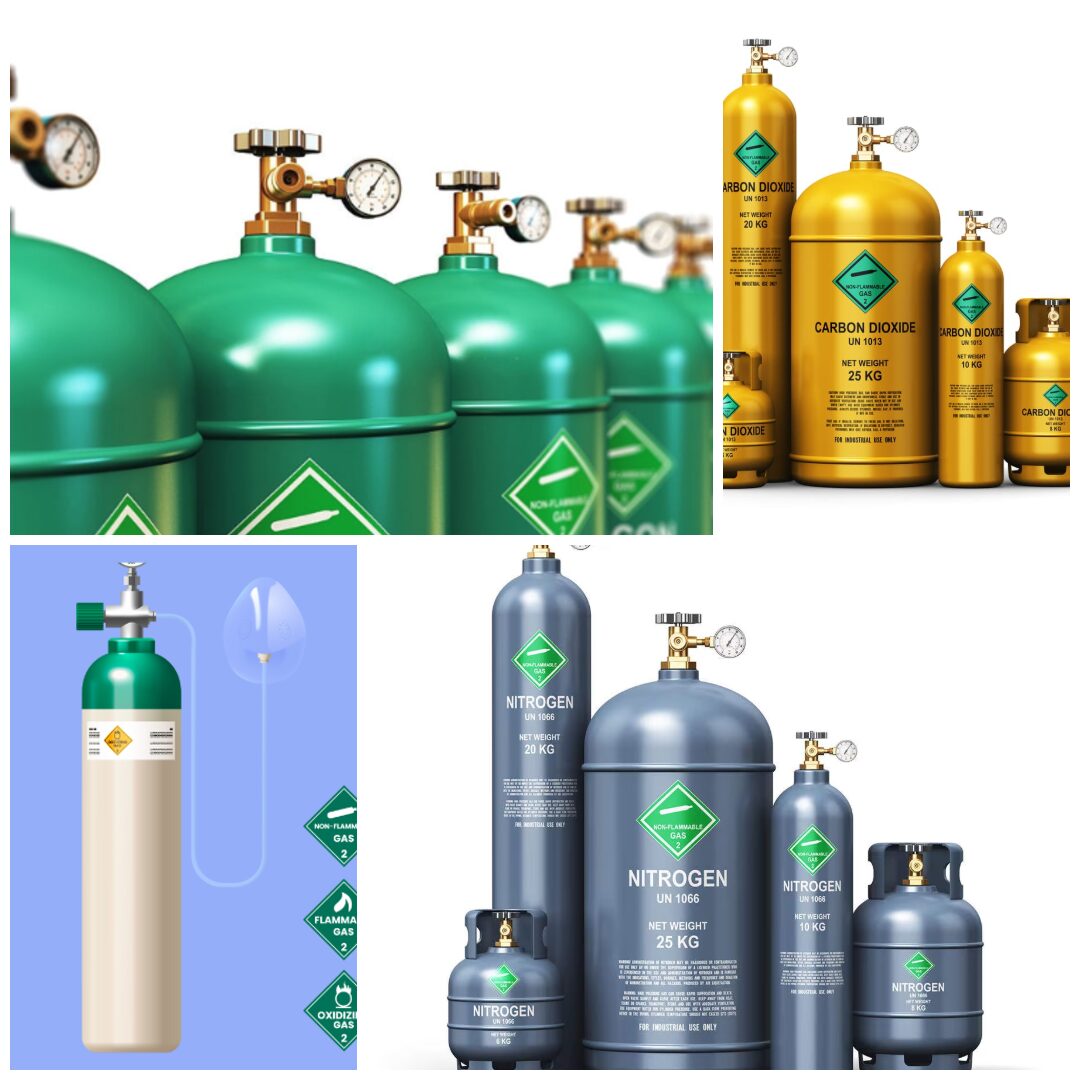Which Gas Should Be Used for Laser Cutting?

Which Gas Should Be Used for Laser Cutting?
Laser cutting is a precise and efficient method for cutting and engraving materials, widely used in industries like manufacturing, automotive, and aerospace. The quality and efficiency of laser cutting depend not only on the machine and settings but also on the type of gas used during the process. Different gases serve various purposes, such as improving cut quality, increasing speed, or preventing oxidation. In this blog, we’ll discuss the most common gases used for laser cutting and their benefits.
1. Nitrogen (N2)
Use case: Primarily used for cutting non-ferrous metals like aluminum, stainless steel, and titanium.
Benefits:
- Clean Cut: Nitrogen is an inert gas that does not react with the material being cut. As a result, it produces clean, oxidation-free edges, especially important for stainless steel and aluminum.
- Faster Cutting: Nitrogen can help achieve faster cutting speeds, making it ideal for mass production.
Drawbacks:
- Nitrogen is relatively expensive compared to other gases, which can increase operating costs.
2. Oxygen (O2)
Use case: Commonly used for cutting ferrous metals like mild steel.
Benefits:
- Improved Cutting Speed: Oxygen supports the exothermic reaction during the cutting process, which helps increase the speed and efficiency of cutting, especially in thicker materials.
- Oxidation for Faster Cuts: While oxygen can cause oxidation on the cut edge, this is not always a drawback, particularly in situations where the extra speed is more important than edge quality.
- Cost-Effective: Oxygen is often less expensive than nitrogen, making it a popular choice for large-scale operations where speed is crucial.
Drawbacks:
- The presence of oxygen can result in the oxidation of the material, creating rough edges that may require additional finishing processes.
3. Compressed Air
Use case: Suitable for cutting non-ferrous metals and some plastics.
Benefits:
- Low Cost: Compressed air is one of the most cost-effective gases available, making it a budget-friendly option for many businesses.
- Efficient for Thin Materials: It is effective for cutting thinner materials with lower precision requirements.
Drawbacks:
- Compressed air may not provide the same cutting quality or speed as nitrogen or oxygen, particularly on thicker or harder materials.
4. Carbon Dioxide (CO2)
Use case: Mostly used for cutting thicker materials, including steel and other metals.
Benefits:
- Versatile: CO2 lasers work well with a variety of materials, from metals to wood and plastics.
- Good for Thick Materials: This gas is particularly effective when cutting thicker materials, offering both precision and power.
Drawbacks:
- Less commonly used for laser cutting than other gases like oxygen or nitrogen due to its lower cutting speed and efficiency.
5. Argon (Ar)
Use case: Typically used for cutting thicker metals and for some engraving applications.
Benefits:
- Clean Cuts for Reactive Metals: Argon is ideal when working with metals that tend to react with oxygen, like titanium or stainless steel. It prevents oxidation while ensuring clean cuts.
- Inert Gas: Like nitrogen, argon is inert and does not chemically interact with the material being cut.
Drawbacks:
- Argon is often more expensive and may not provide the same cutting speed or power as oxygen.
Conclusion: Choosing the Right Gas for Your Laser Cutting Needs
The choice of gas for laser cutting depends on a variety of factors, including the material being cut, the required cutting speed, and the desired quality of the cut. Here's a quick guide:
- Nitrogen for clean cuts on stainless steel, aluminum, and titanium.
- Oxygen for faster cutting speeds on ferrous metals, though it may result in oxidation.
- Compressed Air for budget-friendly cutting of thinner materials.
- CO2 for thicker materials, though less efficient than other gases.
- Argon for clean cuts on reactive metals like titanium.
Ultimately, the gas you choose will depend on your specific cutting requirements, material, and cost considerations. Understanding the properties of each gas will allow you to make an informed decision that maximizes both efficiency and quality in your laser cutting operations.
